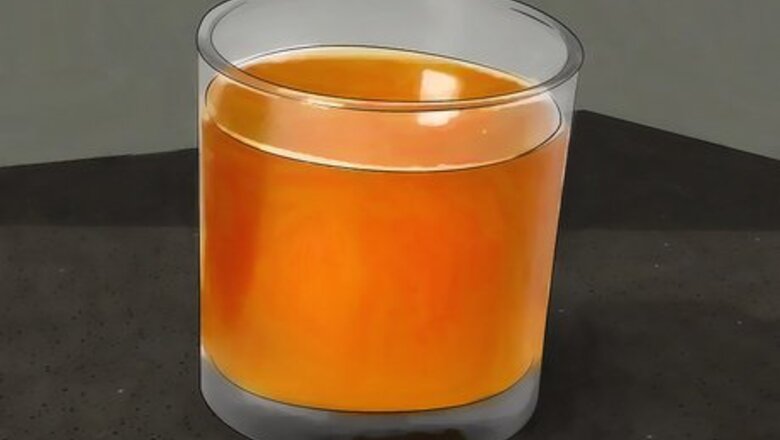
views
Getting Used Cooking Oil
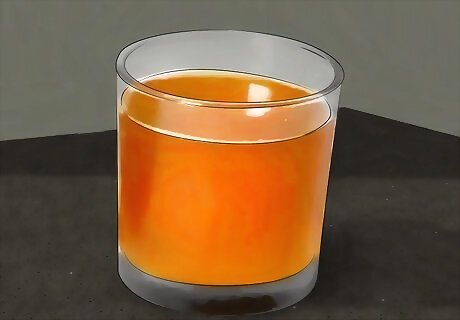
Obtain used cooking oil. Locate a source for vegetable oil that has been used in cooking. Contact local fast food restaurants, cafeterias, hotels and other commercial food establishments to see if you can take their waste oil, or pay a very small fee for it. You may compete with rendering companies, who also pay restaurants to take used oil off their hands. Try a restaurant that sells a lot of fried food, like French fries or fried chicken, as they are very likely to have large quantities of used oil that they need to dispose of. Ask restaurants if they use canola or olive oil, as these are typically the best oils for creating biodiesel. Avoid hydrogenated oils, which are generally higher in Free Fatty Acids and cause problems in biodiesel production. You can buy new cooking oil from the grocery store, but using waste oil is less expensive and helps reduce waste that would otherwise end up in a landfill or in sewer pipes.
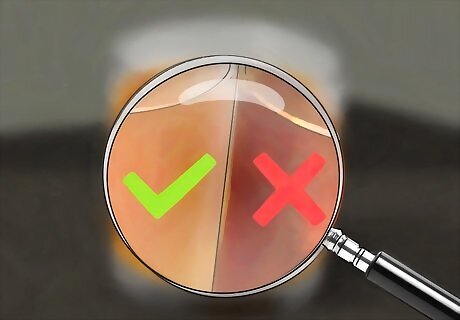
Examine the oil. Look at the oil you obtain to roughly determine its quality. It should look darker than fresh or unused vegetable oil, and will likely include small food matter left from the frying process. If the oil appears milky or cloudy, do not use it, as it is likely too high in water content and/or animal fats, which will interfere in the biodiesel production process. Make sure to follow the proper procedures to dispose of cooking oil that you do not use. Contact your local waste management company or ask the restaurant you obtained the oil from to find out how they safely dispose of the oil.
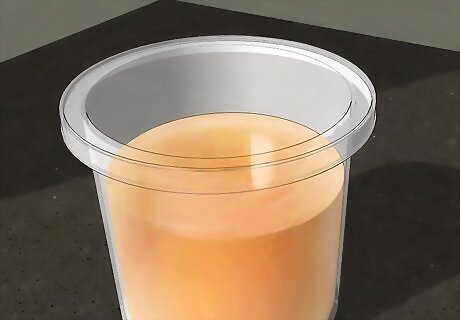
Pour your oil into clear plastic containers. Take any transparent plastic jug from juice, soda, or any other household product and pour your used oil into it for storage. Ensure that any storage jug is completely clean, dry, and free of any other residue or materials, including water. Use a container with a tight lid and no cracks or leaks. The oil may already have come to you in an acceptable container when you obtained it from a restaurant or other source. However, you will need several clean containers (at least 3) on hand for storing oil at each stage of the filtration process. Label oil containers, and all other materials used in biodiesel production, clearly. At this stage, you can label the oil as “used oil” or “unfiltered oil” in order to avoid confusion in later steps of the process.
Filtering the Oil
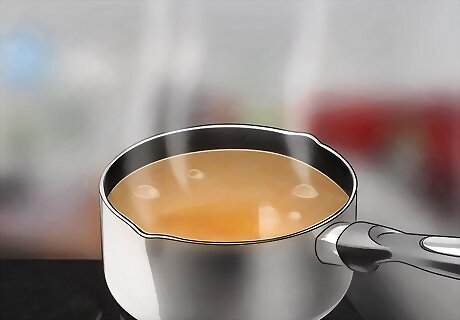
Heat the oil to 95ºF. Pour your used oil into a large, clean cooking pot and heat it to 95ºF over an electric burner to make the oil easier to pour for filtration. Use a cooking thermometer to monitor the temperature. Don’t use a gas burner for this or any other stage of the biodiesel creation process. It’s best to complete this process outdoors or in a very well-ventilated area. Wear long rubber gloves, an apron, and safety goggles to protect against any splashing or spillage. Try heating slightly more than one liter of oil to produce a liter of prepared oil, as some volume is lost during filtering.
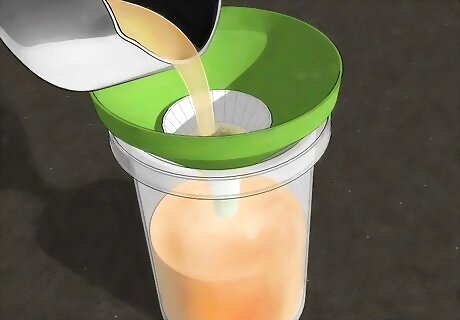
Use cheesecloth or a coffee filter to pour oil through. Place a piece of cheesecloth or a coffee filter into a funnel. Place the funnel on top of another clean plastic container labeled “screened oil” or something similar. Carefully pour the heated oil through this prepared funnel and into the container to catch large food particles. For a larger amount of oil, you can use a screen placed over a large, clean bucket. Use a screen intended for paint or windows, and pour the used oil through it and into the clean bucket. Discard the cheesecloth, coffee filter, or screen with the particles that were caught, or rinse thoroughly for future use if applicable.
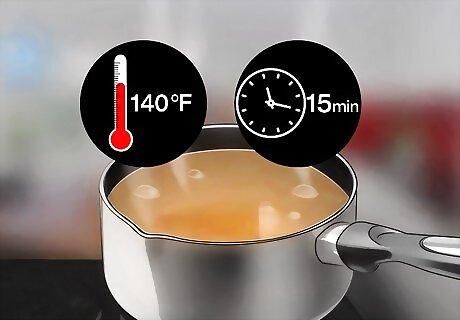
Reheat the oil to 140ºF. Pour your screened oil back into the cooking pot, after washing out the pot thoroughly. Return it to the electric burner and heat at a consistent 140ºF for 15 minutes to allow any water to separate from the oil. Monitor the temperature closely with a cooking thermometer. The heat should not reach above 140ºF, as you will run the risk of steam explosions from the water that settles at the bottom.
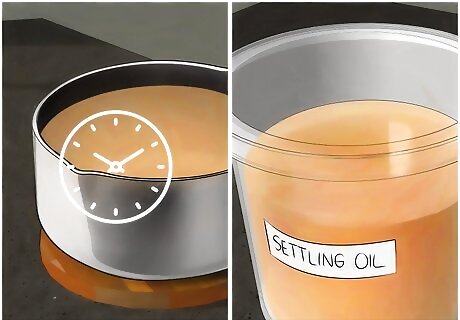
Pour the reheated oil into a container to settle. After it has cooled, return the oil to a plastic container, either the one you used last or a new, clean container labeled “settling oil” or something similar. Let the oil sit for at least 24 hours to allow the water to further settle to the bottom of the container. Observe the container after 24 hours. The water should have settled into a defined layer at the bottom of the container, and it will be cloudy and light tan in color, not clear.
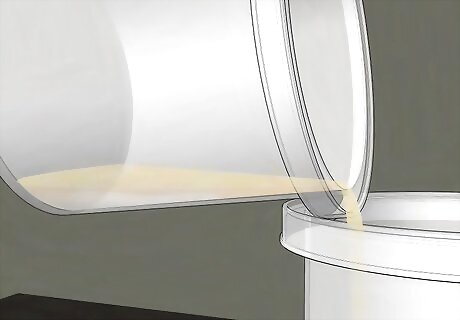
Transfer the oil to a clean container. After settling is complete, pour the oil slowly into a new, clean container labeled “filtered oil” or something similar, taking care not to pour the settled water in with the oil. Water can negatively affect the quality of your biodiesel fuel. The less water content in the oil, the easier the next steps of the biodiesel process will be.
Testing the Oil’s Acidity (Titration Process)
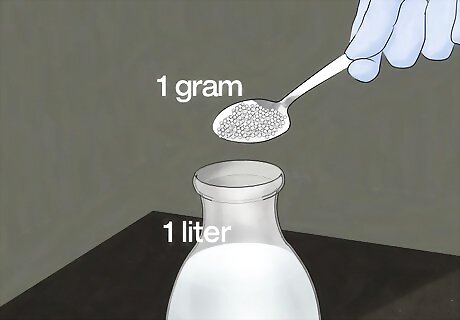
Dissolve lye into distilled water. In a glass container, add a gram of lye to one liter of distilled water. This is a 0.1% lye solution used as a testing device for the pH level of your oil. Use extreme care when handling lye, as it is a toxic substance. Wear eye protection and rubber gloves at all times, handle in a well-ventilated space, and be sure to label your lye and 0.1% lye solution clearly. If lye gets onto your skin, neutralize it immediately with vinegar, and rinse with cool water. You can obtain lye as a household drain cleaning product, but you must ensure that it is 100% lye with no other ingredients added. If you order from a chemical supplier, you can use sodium hydroxide (NaOH) or potassium hydroxide (KOH) Use the same ratio of lye to distilled water if you want to make a larger or smaller quantity of test solution. You can store this solution with a tight lid for testing of future oil batches.
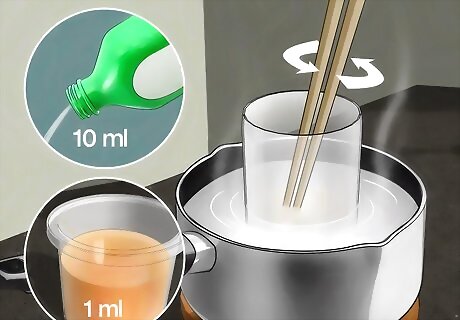
Add oil to isopropyl alcohol. In a separate glass container, pour 1 ml of your filtered oil and 10 ml of isopropyl (rubbing) alcohol. Warm the mixture gently by placing the container into hot water, then stir until the mixture is clear. Wooden chopsticks work well to stir the oil and alcohol.
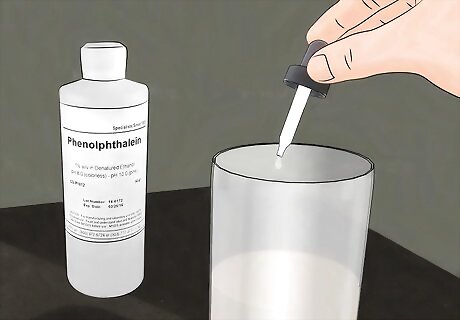
Add phenolphthalein solution. Get phenolphthalein solution from a chemical supplier to use as a pH indicator, as it visibly turns from clear to pink at a pH level of 8.5, which is the level you want for creating biodiesel. Add two drops of phenolphthalein to your oil and alcohol mixture. You can use a pH meter, pH test strips, or a natural food-based pH indicator like red cabbage juice instead, but you may not get as easy-to-read or accurate indications as with phenolphthalein. You will use this indicator to determine the right level of lye to add to your oil to create an ideal pH level.
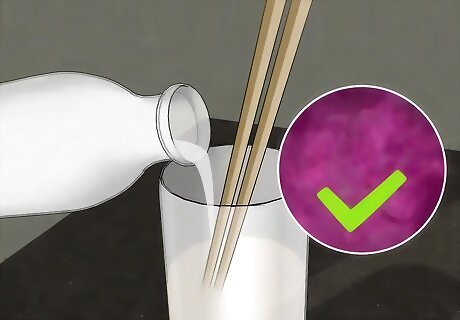
Add 0.1% lye solution to your oil and alcohol mixture. Slowly drip your lye solution into the container with oil, alcohol, and phenolphthalein. Stir continuously. Stop adding the lye solution when your mixture achieves a pink or magenta color and holds that color for 15 seconds, indicating the correct pH level. Add your lye solution using a graduated syringe or pipette so that you can note exactly how much lye is used. The number of milliliters used to turn the mixture pink for 15 seconds is the same number of grams you’ll need to add to the basic quantity of lye used for the biodiesel process. Aim for a quality of oil that needs 2.5-3.5 ml of lye to turn the mixture pink. You may need to try oil from a number of different sources to find this quality, which is ideal for beginners. Discard oil that requires a very high quantity of lye and try again with oil from a different source.
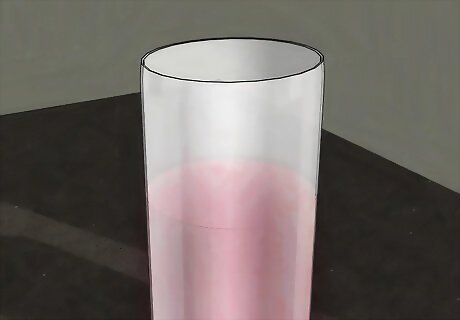
Ready your main quantity of oil. After you’ve determined the acidity of your oil, you can complete the rest of the chemical reaction to create biodiesel using your filtered oil, lye, and methanol. Follow reliable and safe instructions to complete the rest of the biodiesel process. Note that you will add the results of your titration test (the number of milliliters of lye needed to turn your mixture pink) to the quantity of lye your biodiesel instructions call for.



















Comments
0 comment